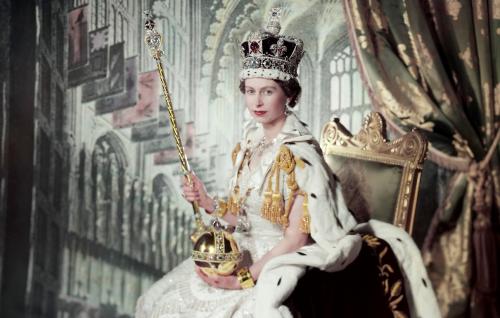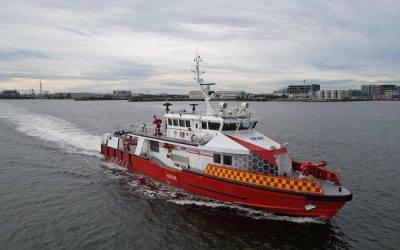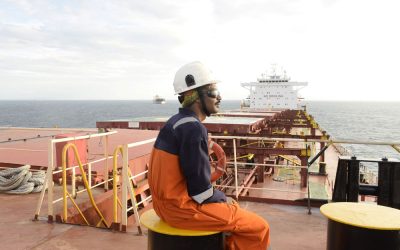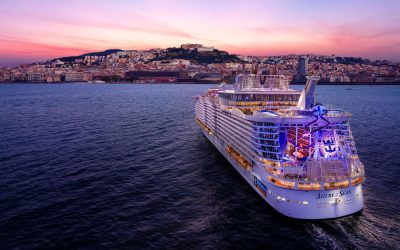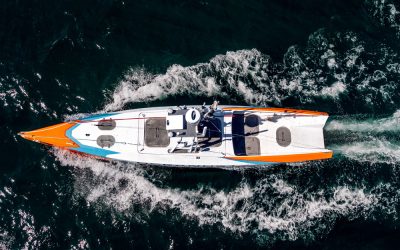This year, Her Majesty Queen Elizabeth II became the first British monarch to celebrate a Platinum Jubilee, marking 70 years of service to the people of the United Kingdom, the Realms and the Commonwealth. A remarkable achievement and one unlikely to be repeated. Her Majesty’s historic reign has had a varied and bountiful impact on the country and its industries, and her influence on maritime is not to be overlooked.
[rml_read_more]
Several significant vessels in the history of British maritime have been named, launched and blessed by the Queen. Notably, Her Majesty embarked on the Royal Yacht Britannia for the first time in 1954, for the final stage of her Commonwealth Tour. Britannia sailed over a million miles collectively for the Royals, carrying out 968 official voyages across the globe over its 44 years’ service.
Britannia’s decommission was first announced by John Major’s government in 1994, and the ship ultimately set sail for the last time in 1997. Britannia departed from Portsmouth, taking a farewell tour around the United Kingdom, calling at six major ports along the British coastline. The Queen was said to be deeply saddened by the occasion; Britannia had originally been designed for her late father, King George VI, who had taken a keen interest in the vessel’s design.
On the day Her Majesty was piped ashore from Britannia for the final time, in a ceremony to mark the occasion (accompanied by the band of HM Royal Marines playing ‘Highland Cathedral’), it was reported to be one of the only occasions the Queen shed a tear in public.
Following the ship’s launch on 16 April 1953, held at the Clydebank Shipyard of Messrs. John Brown & Co. (Clydebank) Ltd, HM The Queen expressed the importance of the vessel, both to herself and the Royal Family: “It has been a great pleasure to come to Clydebank today and once again to launch a ship in John Brown’s yard. This time it means more to me than ever before, because the Britannia, which is now floating in the waters of the Clyde, is not only the most modern addition to a long line of royal yachts which goes back to the reign of King Charles the Second, but she is to be at times the home of my husband and myself and of our family.
“I am sure that all of you who are present here realise how much the building of this ship meant to the late King, my father. He felt most strongly, as I do, that a yacht was a necessity and not a luxury for the head of our great British Commonwealth, between whose countries the seas is no barrier but the natural and indestructible highway. With the wise advice of the Admiralty and of your firm, he laid the plans of a vessel which should wear the Royal Standard in days of peace and which, in the event of a war should serve the cause of humanity as a hospital ship.”
The Queen has also been involved in a number of major passenger vessels. In 1967, she christened Cunard’s Queen Elizabeth 2, her first role as godmother. In 1995, she named P&O Oriana, her first P&O Cruises ship. She also officially named P&O Cruises’ Britannia.
Her Majesty has a deep, personal connection to the Royal Navy and was born into a family steeped in service with the Royal Navy. She is the daughter and granddaughter of monarchs who served as young men in the Royal Navy. Her grandfather, King George V, served from 1877-1892. His son, the future King George VI, followed in his footsteps, and whilst a sub-lieutenant he saw action during the Battle of Jutland in 1916 onboard HMS Collingwood.
She later married Prince Philip, a serving naval officer, and has spoken affectionately and publicly of her time spent as a naval wife in Malta during 1949-1951. Two of Her Majesty’s sons, the Prince of Wales and the Duke of York, served with the Royal Navy from 1971-1976 and 1979-2001 respectively.
To mark the Queen’s Platinum Jubilee, an exhibition celebrating Her Majesty’s loyal service to the Royal Navy, both official and personal, has opened at the National Museum of the Royal Navy, Portsmouth Historic Dockyard. Scheduled to run until October 2022, it captures the wide variety of duties, from the launching of ships, visits to personnel and the presentation of Queen’s Colours to the aforementioned world tours on the Royal Yacht and fleet reviews.
Since childhood, the Queen has visited countless naval warships and shore establishments meeting sailors, Royal Marines and their families. She launched her first naval vessel, the fast battleship HMS Vanguard, in 1944, aged just 18. Since then she has launched numerous others, including HMS Dreadnought, the Navy’s first nuclear-powered submarine, on 21 October 1960.
There have been seven fleet reviews during the reign of Queen Elizabeth II including one in 1953 to celebrate Her Majesty’s coronation. Held at Spithead, just off the coast of Portsmouth, it is remembered for its sheer scale and spectacle. On HMS Surprise, the Queen sailed past more than 300 ships, including two squadrons of submarines, and watched a fly past from the Fleet Air Arm. The most recent fleet review was held in 2005, to mark the bicentenary of the Battle of Trafalgar.
The Queen has been a regular visitor to Nelson’s famous flagship HMS Victory. Launched in 1765 at Chatham Dockyard and commissioned in 1778, the Victory stands today as the world’s oldest commissioned warship – still manned by officers and ratings of the Royal Navy, the Victory has seen 244 years’ service as of 2022.
Her Majesty paid testimony to her close, emotional connection to the Royal Navy at the commissioning ceremony of HMS Queen Elizabeth on 6 December 2017, declaring: “As the daughter, wife and mother of naval officers, I recognise the unique demands our nation asks of you and I will always value my special link with HMS Queen Elizabeth, her ship’s company and their families.”
The £3 billion aircraft carrier is one of the most advanced warships ever built by the Royal Navy and will be on operations for the next 50 years. Six shipyards were commissioned to build the vessel with 11,000 people involved in the construction process.
“Like HMS Victory,” proclaimed Her Majesty, “HMS Queen Elizabeth embodies the best of British technology and innovation – a true flagship for the 21st century. The most powerful and capable ship ever to raise the White Ensign, she will, in the years and decades ahead, represent this country’s resolve on the global stage.”
Her Majesty has also been a figurehead for events crucial to the maritime industry. In 1983, the Queen opened the International Maritime Organization (IMO) headquarters in London, England. Years later, in 2018, she was once again in attendance at the headquarters, marking 70 years since the treaty establishing the United Nations IMO was adopted. During his speech to mark the visit, current IMO secretary-general Kitack Lim spoke of Her Majesty’s links with the IMO and of the Queen’s “deep personal interest in ships and the sea”.
As Royal Patron or President of over 600 charities, military associations, professional bodies and public service organisations, the Queen is integrated into every faction of British life. The Royal Institution of Naval Architects is honoured to have the Queen as a patron and we extend our warmest wishes to Her Majesty on the momentous occasion of her Platinum Jubilee.
